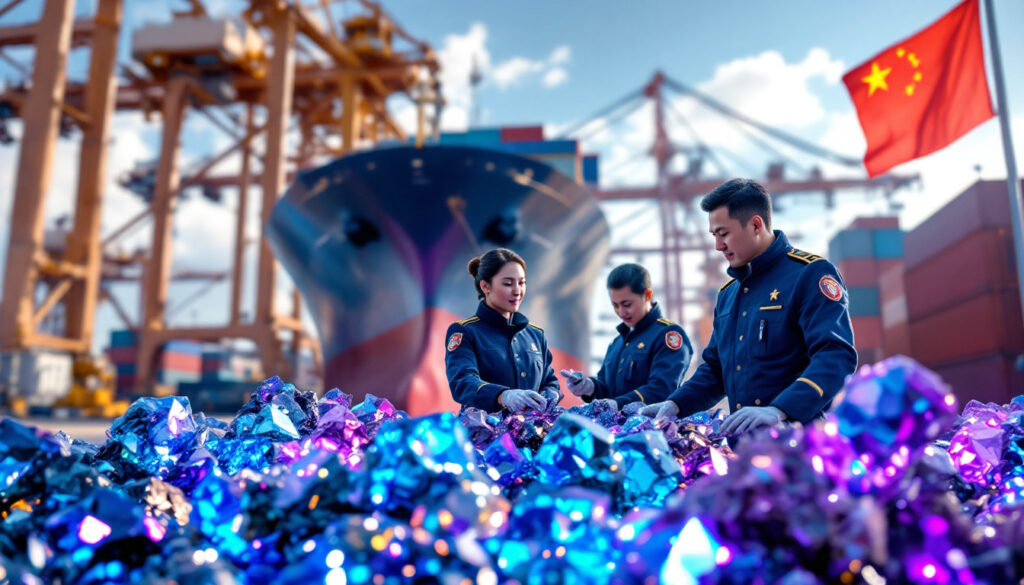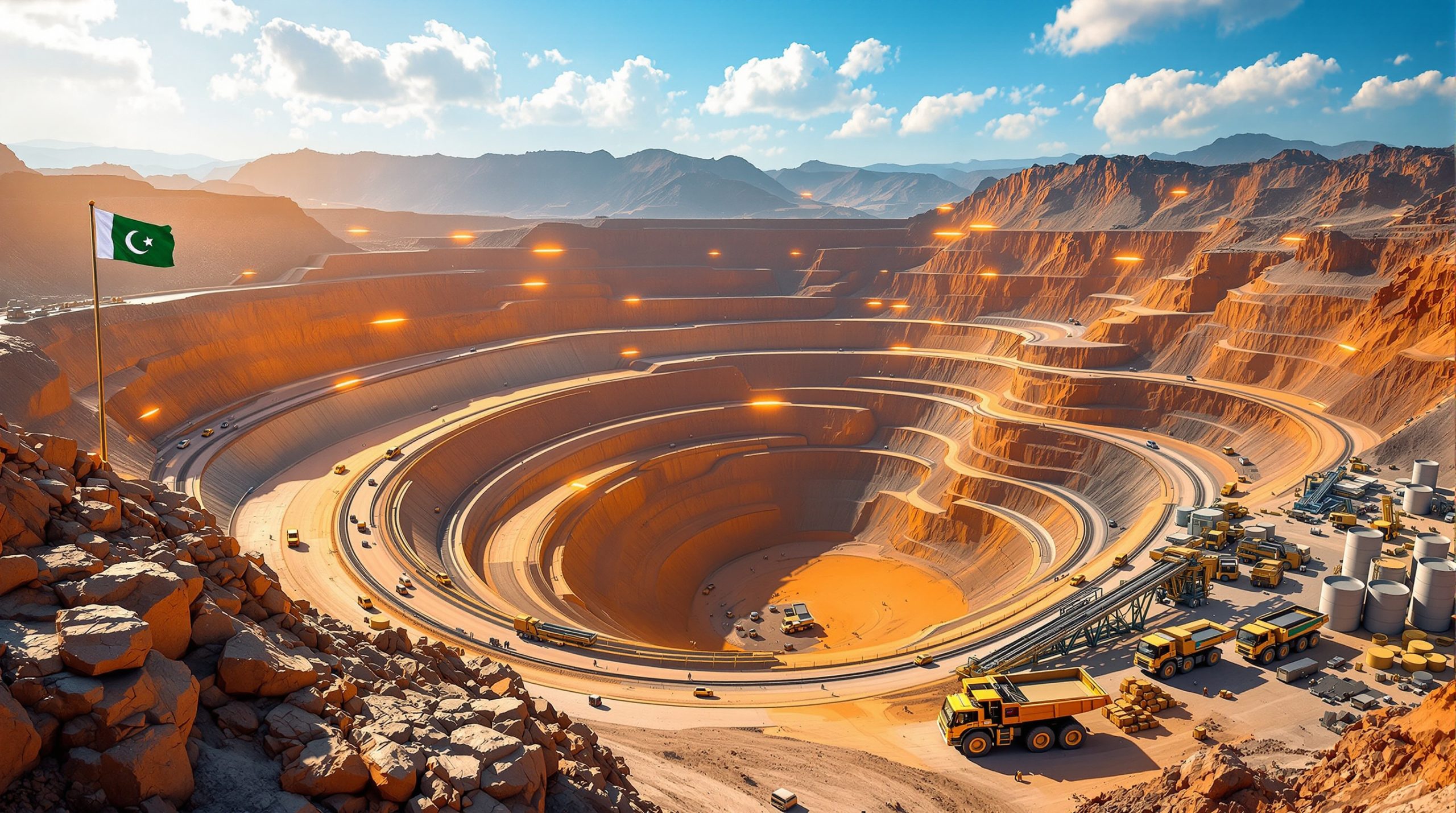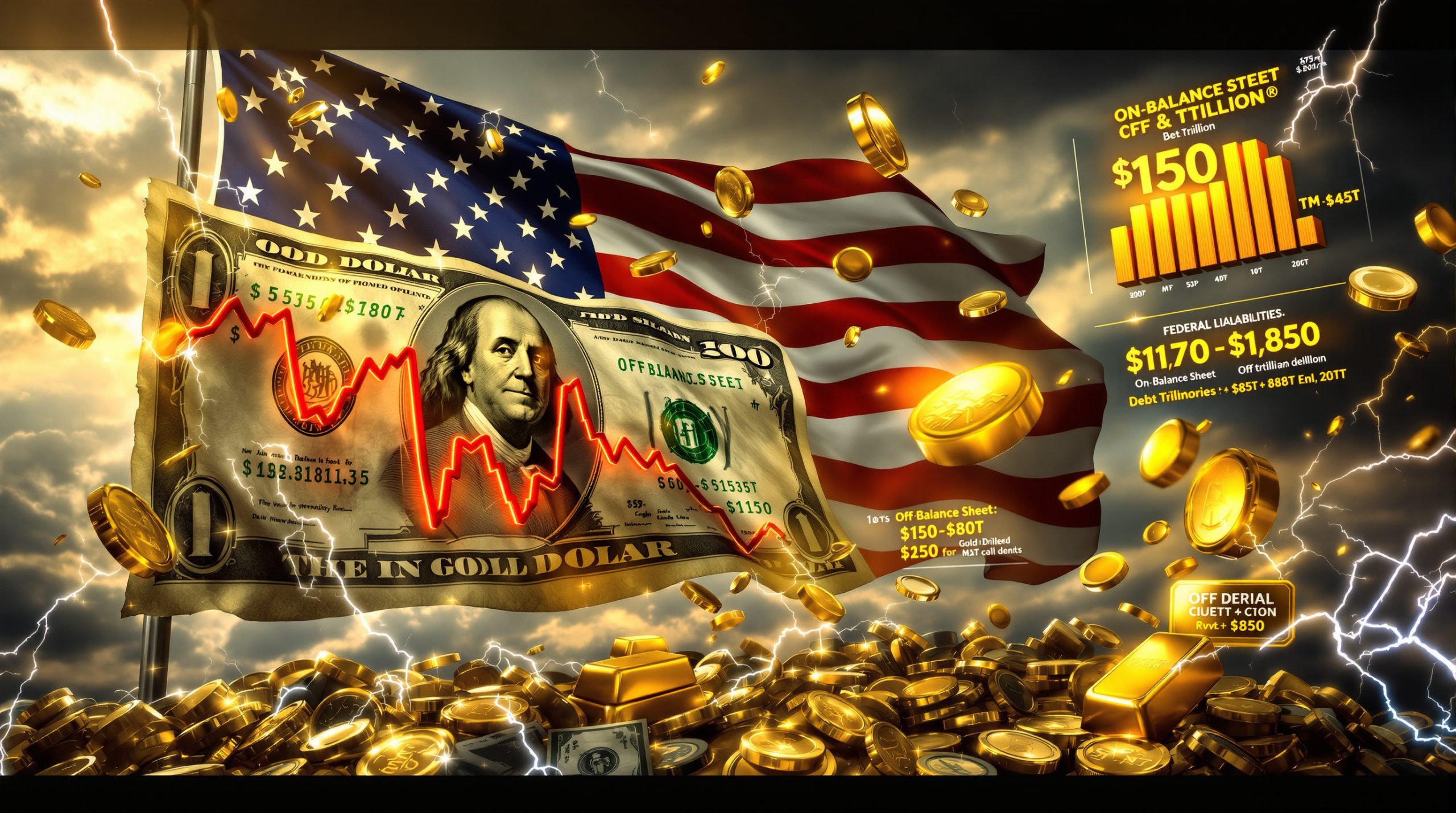What Are Strategic Minerals and Why Is China Controlling Them?
Strategic minerals form the backbone of modern technology and industrial applications, serving as crucial components in everything from smartphones to missile guidance systems. China's recent anti-smuggling crackdown focuses on five key mineral resources where it holds dominant market positions: gallium, germanium, antimony, tungsten, and rare earth elements.
These minerals might not be household names, but their importance to global supply chains cannot be overstated. China produces approximately 60% of global rare earth elements and controls an astounding 80% of the gallium market, according to the U.S. Geological Survey's 2023 Mineral Commodity Summaries. This overwhelming market dominance gives Beijing significant leverage in international trade negotiations.
Understanding Strategic Minerals in the Global Supply Chain
Strategic minerals represent a class of raw materials deemed essential for economic stability, national security, and technological advancement. Their limited availability, concentrated production, and lack of viable substitutes make them strategically valuable in today's interconnected global economy.
The five mineral groups under China's strictest export controls serve critical functions:
- Rare earth elements (REEs) – A group of 17 metals essential for permanent magnets used in electric vehicles, wind turbines, and precision-guided munitions
- Gallium – Critical for 5G telecommunications, LED lighting, and radar systems
- Germanium – Used in fiber optics, infrared technology, and semiconductor applications
- Antimony – Important for flame retardants, batteries, and ammunition
- Tungsten – Vital for hardened steel, electronics, and aerospace applications
According to industry analysis from the CRU Group (2024), China dominates production of germanium and strategic antimony insights with 68% and 82% of global output, respectively. This concentration creates significant vulnerabilities in global supply chains.
"China's dominance in strategic minerals gives it unprecedented geopolitical leverage in technology supply chains," notes David Abraham, author of The Elements of Power (2023). "The country's position didn't happen by accident—it represents decades of strategic investment in mineral processing capabilities."
China's Export Control Framework
China's system for regulating strategic mineral exports has evolved significantly over the past decade, culminating in the comprehensive framework now being enforced. The Chinese Ministry of Commerce implemented strict controls on gallium and germanium exports beginning August 1, 2023, requiring exporters to obtain special licenses and provide detailed information about end-users.
This regulatory approach expanded in early 2024 to include antimony, rare earths, and tungsten under similar restrictions. The licensing requirements now apply to 22 strategic minerals in total, according to China Customs data from 2024.
The export control system includes several key components:
- Mandatory export licenses with detailed end-user documentation
- Background verification of foreign buyers
- Regular audits of domestic producers and processors
- Technical specifications for mineral content and purity
- Quotas for maximum export volumes
China's approach parallels similar frameworks implemented by Western nations, particularly the United States' restrictions on semiconductor technology exports to China. As the Financial Times reported in March 2025, "China's controls mirror U.S. CHIPS Act restrictions, creating a reciprocal tech war that extends beyond computers to the fundamental minerals that make technology possible."
Why Has China Launched This Anti-Smuggling Campaign?
China's strategic minerals smuggling crackdown, launched in early 2025, represents a significant escalation in the country's efforts to maintain control over its valuable mineral resources. The initiative comes in response to growing evidence of sophisticated smuggling operations that have undermined official export controls.
Growing Concerns About Illicit Mineral Flows
Chinese authorities have detected increasingly complex smuggling networks operating across multiple provinces and international borders. According to UN Comtrade data from May 2025, an estimated $500 million worth of rare earth elements were smuggled through neighboring countries including Myanmar and Vietnam in 2024 alone.
These illicit operations typically involve collusion between overseas buyers and domestic producers willing to circumvent official channels for higher profits. In a high-profile case from 2024, a Fujian-based company was caught shipping tungsten labeled as "steel alloy" to South Korea, according to reports from Global Times.
Zhou Xiaoming, a former Ministry of Commerce official, explained to the South China Morning Post in January 2025: "Smuggling not only undermines China's pricing power in global markets but poses genuine national security concerns when strategic materials flow outside regulated channels."
The economic impact of these smuggling operations extends beyond lost tax revenue:
- Undermines domestic price stability for strategic minerals
- Reduces effectiveness of export quotas as policy tools
- Enables competitors to access restricted materials
- Creates quality control issues when materials bypass inspections
- Damages China's ability to leverage resources in trade negotiations
Geopolitical Context of Mineral Resource Protection
China's anti-smuggling campaign must be understood within the broader context of growing technological competition between major powers. As Western countries have imposed increasingly strict controls on semiconductor and other technology exports to China, Beijing has responded by tightening its grip on strategic minerals critical to those same industries.
The campaign aligns with China's broader resource security policies outlined in the country's 14th Five-Year Plan, which emphasizes maintaining strategic leverage in critical minerals strategy. This approach represents a significant shift from earlier decades when China freely exported these materials with minimal restrictions.
"What we're witnessing is the 'weaponization' of mineral supply chains," notes materials science professor Thomas Gray of MIT. "Nations are increasingly using their resource advantages as strategic levers in international relations."
How Are Smugglers Evading Export Controls?
Smuggling networks have developed sophisticated methods to circumvent China's export control regime, adapting quickly to enforcement efforts. Understanding these evasion techniques provides insight into why the current crackdown requires a multi-faceted approach.
Common Smuggling Tactics Targeted by Authorities
According to the World Customs Organization's 2024 report on strategic materials, approximately 35% of antimony shipments from Asia were mislabeled as "lead ore" to avoid export controls. This false classification represents just one of several common evasion methods:
- Deliberate misclassification – Labeling controlled minerals as common industrial materials to avoid scrutiny
- Concealment within legitimate cargo – Hiding restricted minerals inside shipments of unregulated goods
- Documentation fraud – Falsifying end-use certificates and destination information
- Border jumping – Moving materials through remote crossing points with limited inspection capabilities
- Third-country routing – Exporting minerals to an intermediate country before reshipping to final destination
The third-country routing method has proven particularly effective. As Reuters reported in February 2025, Chinese minerals shipped to Laos were being repackaged as "Vietnamese origin" before being exported to Japan and South Korea, effectively masking their Chinese origin.
Evolving Evasion Techniques
As enforcement efforts intensify, smuggling operations have demonstrated remarkable adaptability. More sophisticated evasion techniques include:
- Shell company networks – Creating complex ownership structures spanning multiple jurisdictions to obscure the true buyers and sellers
- Technical modifications – Slightly altering mineral composition to change their Harmonized System (HS) code classification
- Parallel processing – Dividing processing steps across multiple facilities to avoid triggering reporting requirements
- Digital concealment – Using encrypted communications and cryptocurrency payments to hide transactions
- Corruptible intermediaries – Involving multiple third parties to distribute risk and responsibility
Industry analysts have noted that smugglers often stay one step ahead of enforcement by continuously evolving their methods. "The most sophisticated operations employ specialists with intimate knowledge of customs procedures and chemical testing protocols," explains a 2024 report from the Royal United Services Institute (RUSI).
What Does the Anti-Smuggling Campaign Involve?
China's strategic minerals smuggling crackdown represents one of the most comprehensive enforcement efforts in the country's resource sector. The initiative combines regulatory changes, enhanced detection technologies, and coordinated multi-agency operations.
Multi-Agency Enforcement Approach
The campaign is coordinated through China's Ministry of Commerce but involves numerous government agencies in an integrated approach. According to China Daily reports from May 2025, authorities have deployed 1,200 specialized inspectors to major ports and border crossings specifically for mineral smuggling detection.
Key agencies involved in the enforcement effort include:
- General Administration of Customs (GAC) – Responsible for border inspections and cargo verification
- Ministry of Industry and Information Technology (MIIT) – Overseeing industrial compliance
- Ministry of Public Security – Leading criminal investigations and prosecutions
- State Administration for Market Regulation – Monitoring domestic processing facilities
- Provincial governments – Implementing local enforcement actions
This multi-agency approach enables comprehensive monitoring across the entire supply chain, from extraction and processing to transportation and export. The campaign has established formal information-sharing mechanisms between these agencies, breaking down historical silos that smugglers previously exploited.
Targeted Enforcement Strategies
The campaign employs several advanced technological solutions to detect smuggling attempts. Huawei Technologies reported in 2024 that their AI-powered X-ray scanning systems can now detect mineral densities with 95% accuracy, even when concealed within other materials.
Other enforcement innovations include:
- Isotope tracing – Using scientific analysis to verify the true origin of mineral samples by comparing their isotopic signatures to known deposits
- Big data analytics – Identifying suspicious patterns in export documentation and shipping routes
- Remote sensing – Monitoring mining activities to detect unauthorized extraction
- Supply chain audits – Verifying that export volumes match documented production capacity
- Whistleblower incentives – Offering rewards for information leading to successful smuggling prosecutions
The University of Science and Technology Beijing has developed specialized isotope tracing techniques that create a "mineral fingerprint" capable of determining whether specific rare earth elements originated from Chinese mines. This technology makes it substantially more difficult for smugglers to disguise the origin of controlled materials.
What Are the Global Implications of China's Crackdown?
The ripple effects of China's strategic minerals smuggling crackdown are reverberating through global supply chains, affecting industries from consumer electronics to defense manufacturing. The immediate market response has been significant volatility in mineral prices.
Impact on International Markets and Prices
According to the Metal Bulletin's May 2025 report, gallium prices have risen by 40% since the anti-smuggling campaign began, reflecting the sudden contraction in materials flowing through unofficial channels. Similar price increases have been observed for germanium (32%), antimony (25%), and certain rare earth elements (15-45% depending on the specific element).
This price volatility has triggered several market responses:
- Strategic stockpiling by manufacturers concerned about future availability
- Panic buying from smaller electronics producers with limited inventory
- Supply chain disruptions for companies reliant on just-in-time delivery systems
- Production delays for certain high-tech components with no material substitutes
- Cost increases passed on to consumers for products containing these minerals
As Wood Mackenzie noted in their Q1 2025 report: "Companies are stockpiling germanium, risking short-term shortages as inventory is removed from the market and held in private reserves."
The industries most immediately affected include:
- Telecommunications (5G infrastructure)
- Advanced semiconductor manufacturing
- Electric vehicle production
- Renewable energy (particularly wind turbines)
- Aerospace and defense
- LED lighting
- Fiber optic communications
Reshaping Global Strategic Mineral Trade
Beyond immediate price effects, the crackdown is accelerating structural changes in global mineral supply chains. Companies and governments are pursuing several strategies to reduce dependency on Chinese sources:
- Alternative mining projects – Australia's Arafura Rare Earths project has been accelerated to begin production in 2026, according to their April 2025 ASX announcement
- Recycling innovations – New technologies that can recover strategic minerals from electronic waste
- Material substitution research – Finding alternatives that can perform similar functions without relying on controlled minerals
- Reshoring processing capabilities – Western countries investing in domestic capacity to process minerals mined elsewhere
- Strategic reserve development – Government-managed stockpiles of critical materials
The European Union's critical raw materials supply Act aims to dramatically reduce dependency on Chinese minerals by mandating that 10% of strategic minerals must be sourced domestically by 2030. Similar initiatives are underway in the United States, Japan, and South Korea.
"What we're witnessing is not just a crackdown on smuggling, but a fundamental realignment of global mineral supply chains that will take years to complete," explains minerals economist Dr. Sarah Chen of Stanford University.
How Can Businesses Navigate China's Strategic Mineral Controls?
Companies dependent on strategic minerals face significant challenges in adapting to China's enhanced export controls and anti-smuggling efforts. However, proactive strategies can help mitigate risks and ensure continued access to these critical materials.
Compliance Strategies for Legitimate Exporters
Businesses operating within China's strategic minerals sector must navigate complex regulatory requirements to maintain legal export operations. The OECD Due Diligence Guidance for mineral supply chains (2023 edition) provides a framework for responsible sourcing that aligns with Chinese requirements.
Key compliance elements include:
- Comprehensive documentation – Maintaining detailed records of material origin, processing, and intended end-use
- End-user verification – Implementing robust systems to confirm the legitimacy of overseas buyers
- Supply chain mapping – Creating complete visibility from mine to manufacturing
- Regular audits – Conducting independent reviews of compliance systems
- Technology solutions – Implementing tracking systems like IBM's blockchain platform, which Ford uses to trace cobalt in its supply chain (IBM Case Study, 2024)
Chinese exporters must also maintain regular communication with regulatory authorities, as requirements continue to evolve with enforcement priorities. Establishing relationships with licensed processors and transporters with proven compliance records reduces the risk of inadvertent violations.
Risk Mitigation for Downstream Industries
For companies dependent on Chinese strategic minerals, diversification has become an essential risk management strategy. Manufacturers should consider:
- Geographic diversification – Developing relationships with emerging suppliers in Australia, Canada, Brazil, and Vietnam
- Material substitution – Investing in R&D to find alternatives for the most supply-constrained minerals
- Recycling programs – Implementing closed-loop systems to recover and reuse strategic minerals
- Strategic inventory management – Maintaining appropriate buffer stocks without excessive stockpiling
- Contractual protections – Negotiating supply agreements with provisions addressing export control risks
Technology companies may also need to redesign products to reduce dependence on the most controlled materials. For example, some electronics manufacturers have redesigned circuits to use less gallium and germanium in response to supply uncertainties.
"The companies that will navigate this new landscape most successfully are those already investing in supply chain resilience rather than just responding to immediate shortages," notes procurement specialist Jennifer Wu of PricewaterhouseCoopers.
FAQs About China's Strategic Minerals Smuggling Crackdown
What specific penalties do smugglers face if caught?
Individuals and companies caught smuggling strategic minerals from China face severe consequences under Chinese law. According to Article 153 of China's Criminal Code, smuggling restricted materials can result in:
- Prison sentences up to 10 years for significant cases
- Fines up to 5 times the value of the smuggled goods
- Confiscation of all smuggled materials and related equipment
- Revocation of business licenses and export privileges
- Blacklisting from future mineral purchasing
For the most severe cases involving large quantities or sensitive materials, life imprisonment may be imposed. Corporate executives may be held personally liable even if they didn't directly participate in smuggling operations but failed to implement adequate compliance measures.
Penalties have increased significantly compared to previous enforcement actions. Before 2023, typical sentences for mineral smuggling averaged 2-5 years, whereas recent cases have seen maximum penalties applied more frequently.
How does this crackdown affect global technology production?
The immediate impact on technology manufacturing has been uneven, with the most significant effects concentrated in specific sectors:
- Semiconductor production has faced delays due to germanium and gallium constraints
- 5G infrastructure deployment has slowed in some regions due to material shortages
- LED manufacturing has seen cost increases of 8-12% on average
- Electric vehicle production has been minimally affected due to pre-existing stockpiles
- Defense contractors with specialized material requirements have faced the most acute challenges
Larger manufacturers with sophisticated procurement strategies and existing relationships with Chinese suppliers have generally managed the transition more effectively than smaller companies with less supply chain visibility.
The long-term outlook remains uncertain. If alternative supply sources develop as anticipated, disruptions may be temporary. However, some analysts predict a permanent "risk premium" on strategic minerals that will increase baseline costs for high-tech manufacturing.
Are other countries implementing similar controls on strategic minerals?
While China's system represents the most comprehensive strategic minerals control regime, other countries have implemented or are developing similar frameworks:
- United States – The Defense Production Act has been invoked to support domestic production of critical minerals, with specific controls on certain rare earth exports
- European Union – The Critical Raw Materials Act establishes strategic autonomy goals and potential export restrictions
- Russia – Implemented controls on titanium, vanadium, and platinum group metals
- Indonesia – Restricted nickel ore exports to encourage domestic processing
- Australia – Considering [defence-
Want to Be Alerted About Major Discoveries Before the Market Moves?
Discover the investment edge with Discovery Alert's proprietary Discovery IQ model, providing real-time alerts on significant ASX mineral discoveries across 30+ commodities. Learn why historic discoveries can generate substantial returns by visiting the dedicated discoveries page and start your 30-day free trial today.




